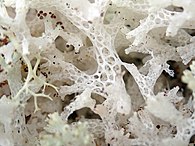A fenestra (fenestration; pl.: fenestrae or fenestrations) is any small opening or pore, commonly used as a term in the biological sciences. [1] It is the Latin word for "window", and is used in various fields to describe a pore in an anatomical structure.

